Written by Claudia Quinones, Duna Viezzioli, and Fanny Steckel
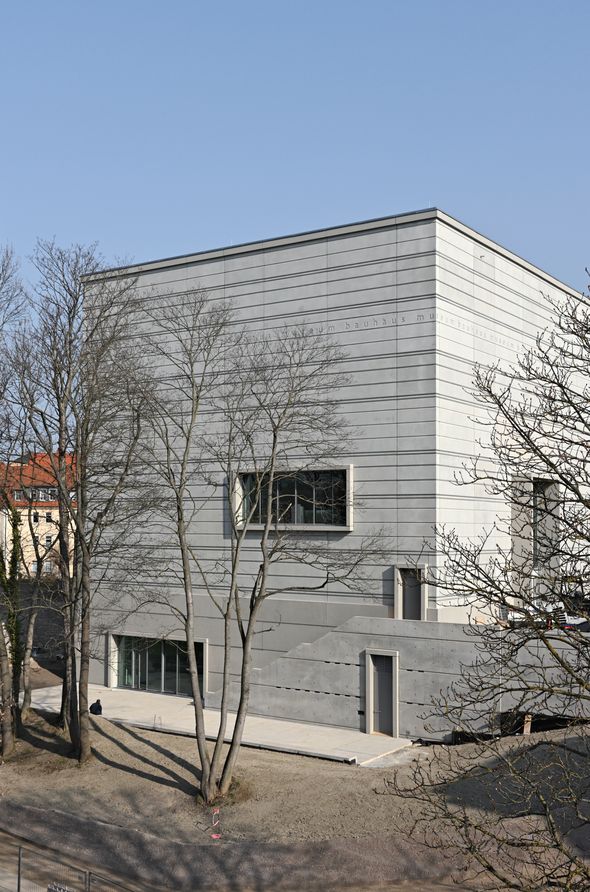
After many years away from the spotlight, the Bauhaus movement is finally receiving some much-deserved attention in its birthplace, the city of Weimar. This year marks the 100th anniversary of the founding of the Bauhaus school, populated by artists, architects, teachers, and students dedicated to wide-scale social reform through the use of advanced art that was still accessible to the masses. The school used a rigorous program subject to an experimental ideology, where students had to master basic concepts before progressing to practical work. An interesting fact is that art history courses were taught as late as possible, in order to keep the artists’ perspectives fresh and prevent stylistic borrowing or copying. The Bauhaus style became incredibly influential and permeated modernist architecture, art, and design, including graphic design, interior design, industrial design, and typography.
What Is Weimar’s Relationship to Bauhaus?
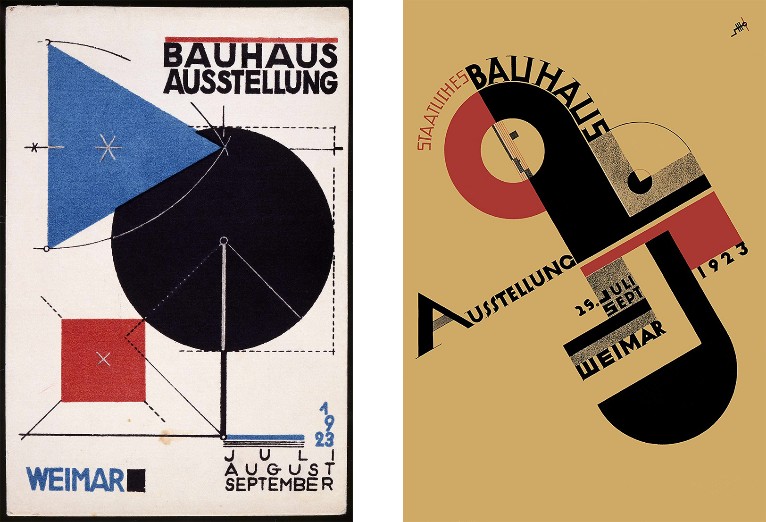
Weimar has a long historical association with various forms of art and crafts, even prior to the Bauhaus movement. The Bauhaus University itself derives from the Grand Ducal Art School established in 1860; when this school merged with the Grand Ducal Vocational Arts School in 1919, Bauhaus University was born. Thus, from its inception the university linked together fine arts and handicrafts, corresponding to the movement’s philosophy of creating a “total” work of art (Gesamtkunstwerk).[i] Despite fostering a sense of community and purpose, participants were forced to leave Weimar in 1925, and ultimately Germany in 1933 when the Nazis came to power.[ii] It’s no coincidence that Bauhaus grew during the Weimar Republic, when social and political views were more experimental. The founder of the Bauhaus movement, Walter Gropius, wanted to “introduce soul into the age of the machine.” Although the school was only open for 14 years, its effects are still felt today.[iii] However, this history is often obscured in favor of more traditional subjects, which has resulted in Weimar being marketed to tourists as a Classical city, when in fact it possesses a mixture of architecture from various time periods, with Bauhaus presenting a particularly recognizable example of modernist and industrial design. The city itself serves as a physical manifestation of the “topography of modernism,” bringing art to life in a three-dimensional format. Since Bauhaus’ main philosophy is harmony between form and function, the actual building where the New Bauhaus museum is housed, in addition to its location, is incredibly important and symbolic in many aspects. Considering the museum’s position, its architecture, and its meaning leads to a refreshing perception of the city both nationally and globally.
Classical Style vs. Bauhaus
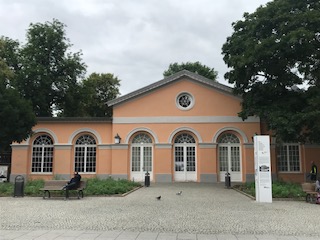
Photograph by Claudia Quinones.
Previously, the Bauhaus museum was located in a Classical building directly opposite the National Theater on the plaza, with its statue of Goethe and Schiller. This space directly represents the Romantic notions of the city and its literary allusions but is not related to the Bauhaus aesthetic, making it less effective and attractive to visitors. Furthermore, the building’s limited space meant that the bulk of the collection was not on display; it was more introductory than comprehensive. Trip Advisor reviews demonstrate how many visitors were disappointed that the birthplace of Bauhaus did not have a museum that adequately celebrated this cultural heritage; one reviewer even referred to the space as “historic rather than interesting.”[iv]
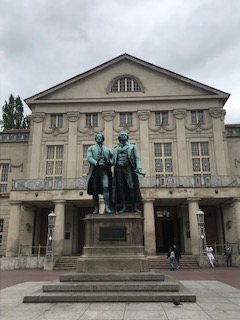
Photograph by Claudia Quinones.
The location of the new site and its design now make powerful political and social statements regarding the importance of Bauhaus in Weimar’s historical context. Prof. Heike Hanada’s minimalist vision is aligned to the principle of “form follows function,” which means that the design of a building must be productive and related to its purpose.[v] By simplifying the museum to a simple cube, the exterior calls attention to the interior collection, as Bauhaus emphasizes clean lines and shapes as the base for rational design. Placing it next to the Weimarhalle (Congress Center) is the first step in an ambitious urban planning agenda, which aims to reinvigorate and re-brand the area as a “lively cultural district” and “one of the most strategic points in the topography of modernism,” connecting the historical city center with this counterpoint.[vi] The museum’s direct interaction with green and open spaces nearby, and its position at the center of a new “cultural axis” for the city, is a direct response to other buildings in the area, namely the Nazi “Gauforum” and the classical old town. It provides a unique repository for the city’s historical, political, and social past to converge and form a new path for the future.[vii]
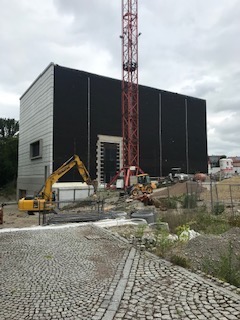
Photograph by Claudia Quinones.
Conversations in the Field
We spoke to several individuals in Weimar in the summer of 2018 – a year before the inauguration of the new museum – to discuss their thoughts and perceptions regarding the museum’s new home, the Bauhaus movement, and why it matters to the public. Here is what they had to say.
The Art Historical Perspective
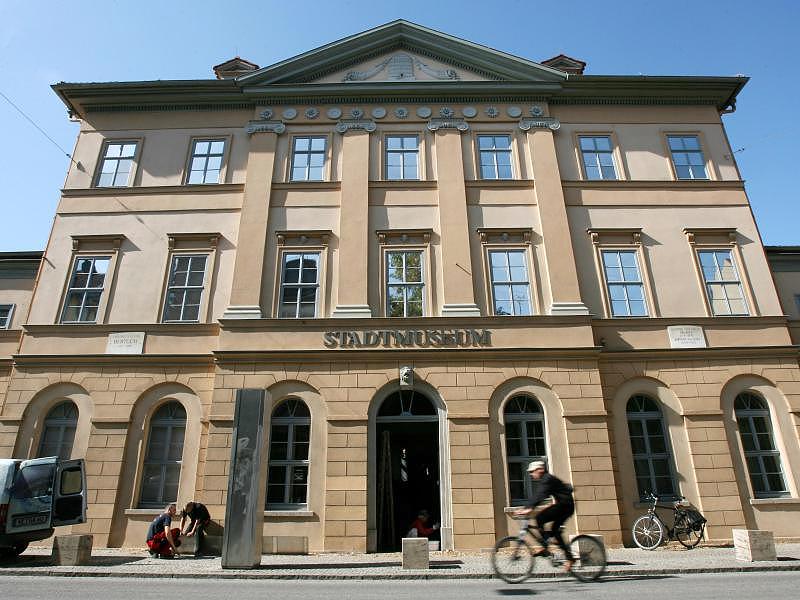
The Director of Stadtmuseums Weimar, Dr. Alf Rofner, and the Art Historian of the same institute, Dr. Christian Hecht, explained that in their view, communication between cultural institutions has been vital to give a message of cohesion, as “such processes are necessary for survival in such a small city as Weimar.” Within the frame of the new museum project and construction, Weimar art institutions have been encouraged to look for synergies and re-balance their influence, meaning, and space in the cultural environment of the city. The New Bauhaus will be an attraction for art lovers all around the world, conceptually re-forming, after 100 years, a new melting-pot for contemporary art. Dr. Hecht added that discussions were mostly centered on the exterior of the building, although the interior is ultimately important as well, given Bauhaus’ commitment to “total” works of art and harmonizing across different formats. He concluded: “It is really important that those significant objects will be placed in a good environment and not in a mass of content being dumped in the spaces. The ‘less is more’ approach was also a slogan of the Bauhaus and I think that it will be well implemented. So we are very looking forward to the museums’ collaborations and we have plans to rotate a lot of art exhibitions.”
The Architectural and Design Perspective
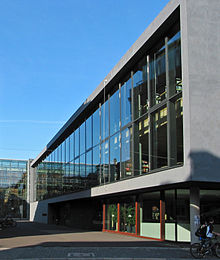
Next, we interviewed two art and architecture students, Otto Oscar Hernández and Stefan Licheri at the Bauhaus University campus, to get their opinions on the new museum. Interestingly, both Otto and Stefan are from Latin America (Havana, Cuba and Caracas, Venezuela, respectively). As long-time residents of Weimar (8-10 years), they expressed enthusiasm for the museum not only as a much-needed space for Bauhaus artifacts but also as a symbol for Weimar itself, positioned on the global stage.
As Otto said, “[The concept of] Weimar transcends physical borders; it is bigger than [the city of] Weimar.” Our interview subjects additionally stated that the museum exemplifies the tension that has always existed between the visionary founders and proponents of Bauhaus on one side, and locals on the other. Therefore, the Bauhaus museum is a physical space as well as a focal point for arguments on what and who museums are for: their purpose and target audience. Otto and Stefan believed that Weimar has not known how to properly capitalize off of Bauhaus as a representative concept, and that the city has a moral responsibility to promote this heritage. The new museum provides an ideal opportunity for the city to take advantage of this cultural wealth and profit from it, rebranding Weimar as forward-thinking and modern rather than traditional, while providing context and coherence. “Synergy” is once again a key term for understanding this process.
Victoria Tomás, a student of design from Buenos Aires, Argentina, also spoke about the importance and continued relevance of Bauhaus for those involved in the artistic fields: “Bauhaus gives us answers to open problems in our field. The 100th anniversary has been a source of inspiration for our publishing class,” culminating in a specialized magazine discussing the movement’s influence on Latin America. This project exemplifies the transcendental nature of Bauhaus principles and how it has succeeded as a universal style, even in countries on the other side of the globe.
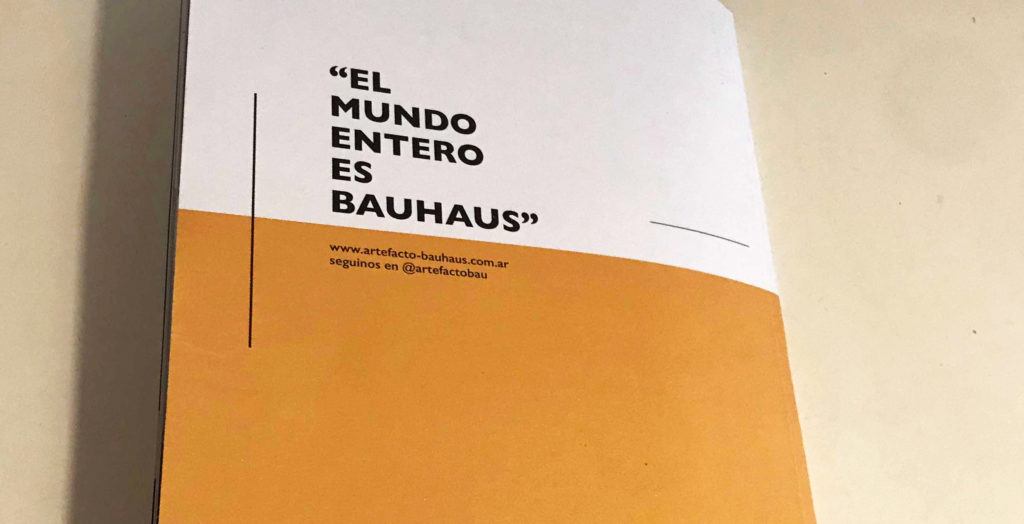
Bauhaus Today
By celebrating the centenary of the Weimar Republic and Bauhaus, we learn to appreciate and celebrate this social-political history and examine what it means for us today. Bauhaus’ sense of community, and its desire for future generations to gain a better quality of life, is just as relevant now as it was 100 years ago. The new museum is the first stepping stone to greater visibility for both the city of Weimar and the Bauhaus movement, and it will be interesting to see how both continue to develop.
[i] https://www.uni-weimar.de/en/university/profile/portrait/history/
[ii] http://www.theartstory.org/movement-bauhaus.htm
[iii] https://www.citylab.com/design/2019/03/walter-gropius-bauhaus-art-school-nazi-germany-anniversary/583999/
[iv] https://www.tripadvisor.com/Attraction_Review-g187426-d319400-Reviews-Bauhaus_Museum-Weimar_Thuringia.html
[v] https://en.99designs.de/blog/design-history-movements/know-your-design-history-the-bauhaus-movement/
[vi] https://www.bauhausmuseumweimar.de/en/neubau
[vii]https://www.grandtourofmodernism.com/magazine/construction-culture/bauhaus-museum-weimar/
XXXXXXXXXXXXXXXXX